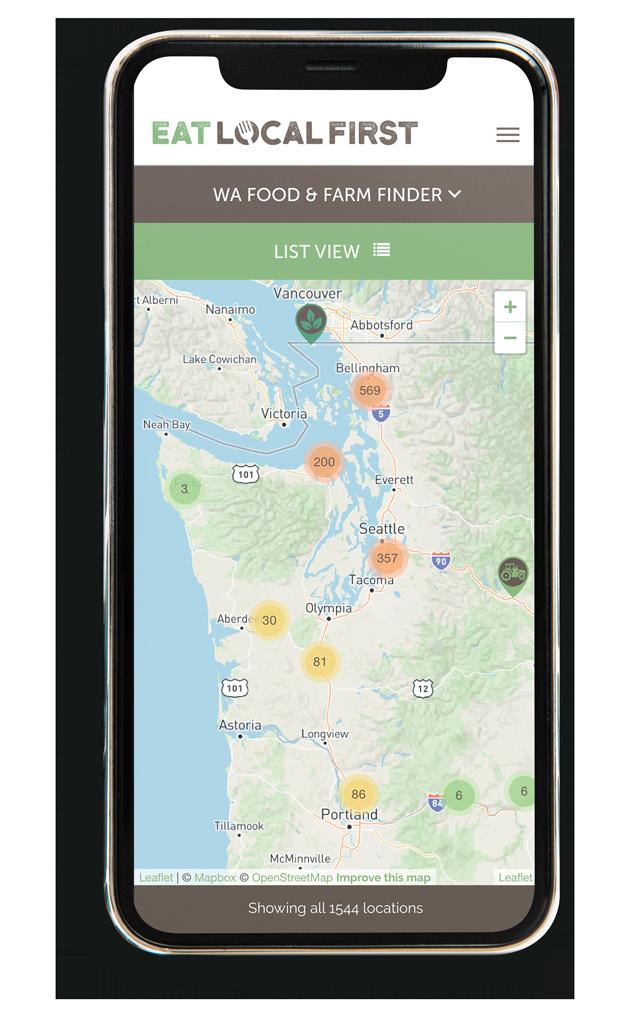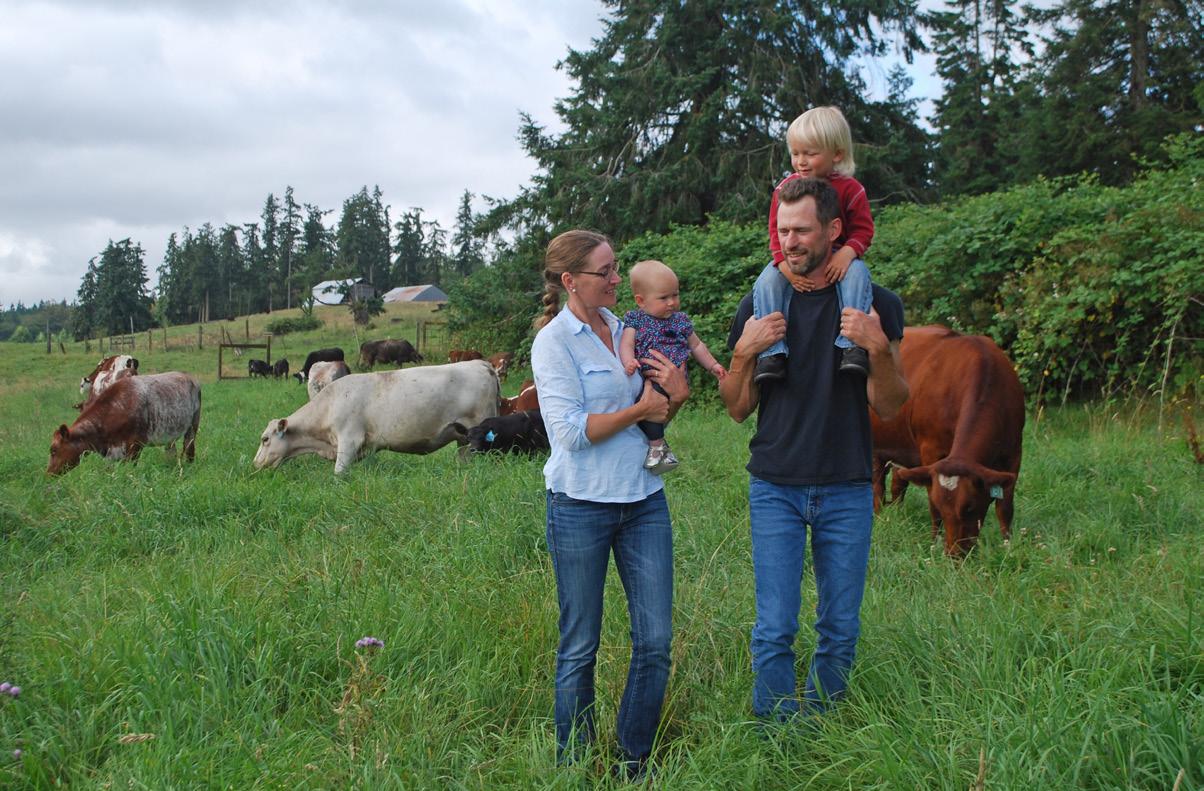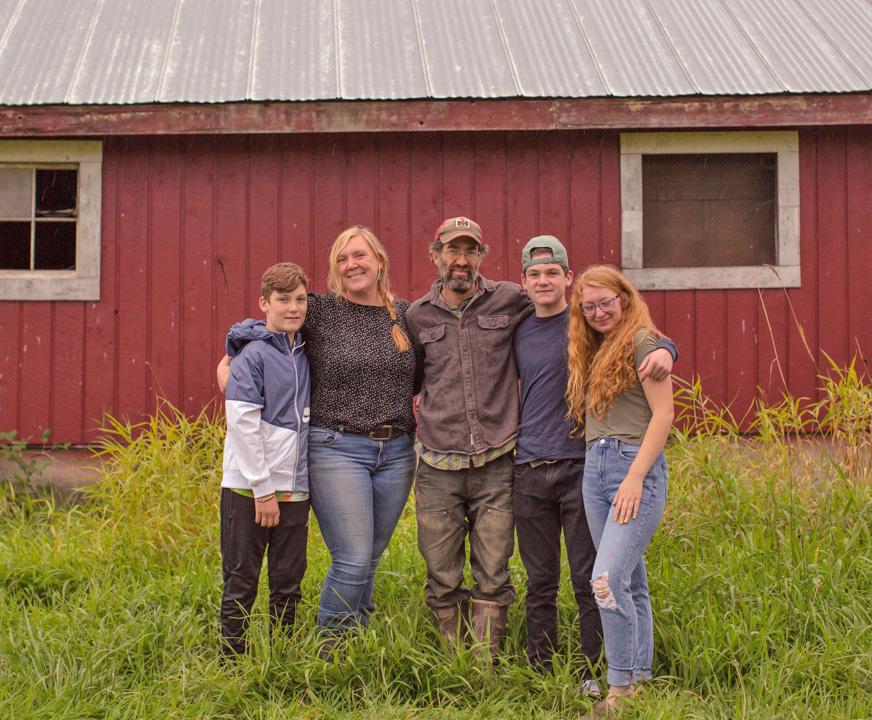THE FOOD CO-OP QUARTERLY NEWSLETTER
AROUND THE TABLE
STRENGTHENING THE LOCAL COMMUNITY!
SUMMER RECIPES, BOARD ELECTIONS, LOCAL FARMING AND MORE

General Manager
Kenna Eaton
Managing Editor
Andrea Stafford
Layout Christopher Bunch
Copy Editor
Lisa Barclay
Contributors
Andrea Stafford, Deb Shortess, Liam Cannon
Daniella Chase, Kenna Eaton, Kate Nichols, Sidonie Maroon
Board of Directors
Juri Jennings, Claire Thomas, Michael Flowers, Dave Dunn, Lisa Barclay, Owen Rowe
Around The Table
is published by The Food Co-op on a quarterly basis and comes out in the winter, spring, summer, and fall.
If you are interested in contributing content for Around The Table, please contact marketing@foodcoop. coop to discuss your article idea. Articles should include stories about food, community, sustainability, or cooperation.

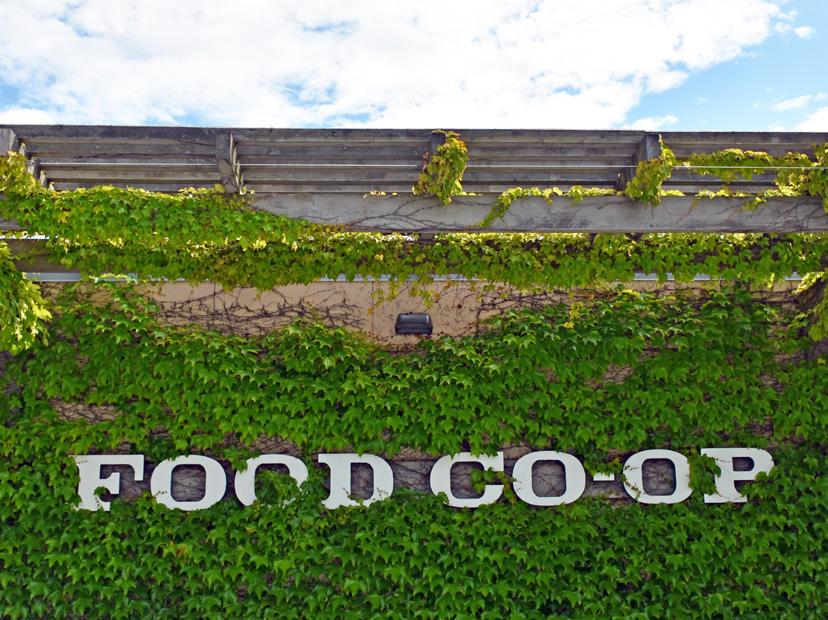
WE’RE PASSIONATE ABOUT LOCAL!
BY KENNA S. EATON, GENERAL MANAGERWe’re passionate about local at the Co-op and have been since our early days. To me one of the key reasons we buy from local vendors is it helps strengthen the broader community. It keeps money circulating in our county, keeps people employed, and in turn grows the local economy, and in my mind that’s a win-win-win.
Back in our early days, as we grew and our space grew, we wanted to offer our members a greater selection of goods. It simply made sense in those days, when our buying volume wasn’t that great, to buy from our local producers—less distance to our store and a wider choice of products. Some of those folks are no longer in production, but their work formed the basis for our commitment to supporting our local vendors. I’m thinking of companies like Coyote Found Candles, Abundant Life Seeds, or The Village Baker. With such great local producers, we had no need to look elsewhere for these products. We bought fresh eggs, spring greens, and apples gleaned from backyard farmers, some of whom were able to grow their passion into bigger operations such as Colinwood Farms, still in operation at the intersection of F & San Juan Streets. Some, like Red Dog, Midori, and Dharma Farm grew as we grew, and in their case grew beyond us to supply the wholesalers or branched out into value-added products like kraut.
Today we buy from over 133 local farmers and producers, and they comprise 11% of all store purchases. While the number of producers hasn’t significantly grown over the years, the amount of purchases has increased and grown right along with store sales. As an example, back in 2011, we had 129 local farmers and producers, accounting for 10.1% of our purchases on total store sales of $11.7 million for that year. Now in 2023, we are projecting sales of over $21 million, which represents a 68% increase in buying power. Dang. Between buying from local vendors and employing just over 100 staff, that’s quite a lot of dollars circulating in our community.
But this isn’t just about money. Buying from our local vendors is a much richer experience for us as staff. It gives us that opportunity for personal interactions, which doesn’t happen when we buy from UNFI (our major grocery distributor). We get to build relationships and to ask how the farm is doing. Is the soil warm enough for our favorite spring greens? Are the chickens molting yet? We can find out how the supply chain is affecting their ability to source their soap ingredients or glass jars, or how the honeybees are buzzing. We also hear about other challenges and opportunities, all of which make that product and producer much more than just another line in a buying list. We may learn about their hopes and dreams, and possibly help make connections to aid in growing their operations, finding land, or even funding that dream. And that’s why we’re passionate about local, and we hope you are, too.
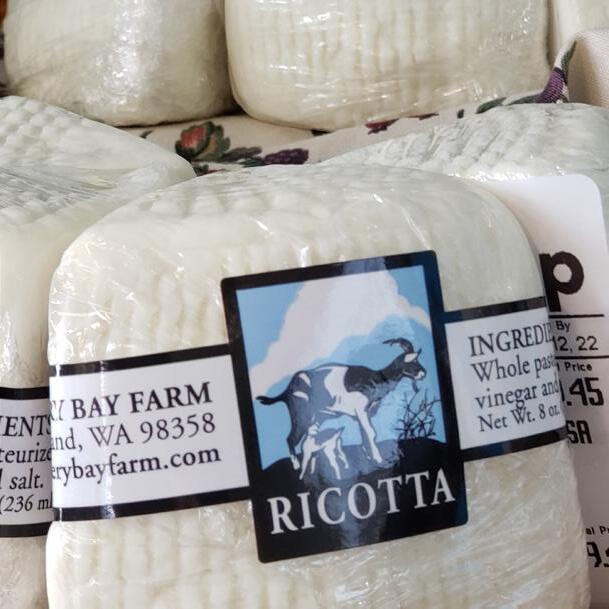
In 2022 we created the Farmer Fund, which collects your pennies at the register as well as your donations to give out as grants each fall to farmers and other local food producers, so they can make improvements or carry out projects. You can also donate online on the Food Co-op’s website: look under Community, then Change For Change.
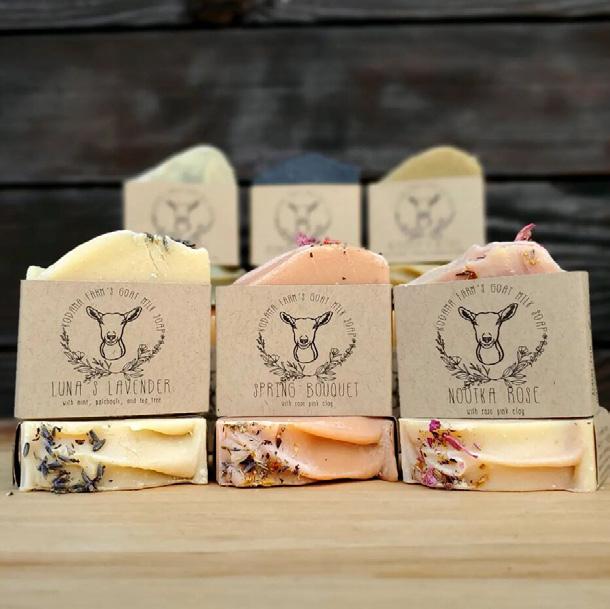
In the meantime, be sure to enjoy the bounty of local fruits, berries, veggies, flowers, bread, flour, grain, tea, soap, cards, coffee, hot peppers, hot sauce, muesli, cheese, yogurt, meat, sauerkraut, fish, eggs, jams, fruit sauce, ice cream, frozen desserts, cookies, chocolate, body care, candles, seeds, cards, magazines, and more, not only this summer, but on into the rest of the year, and many more years to come!
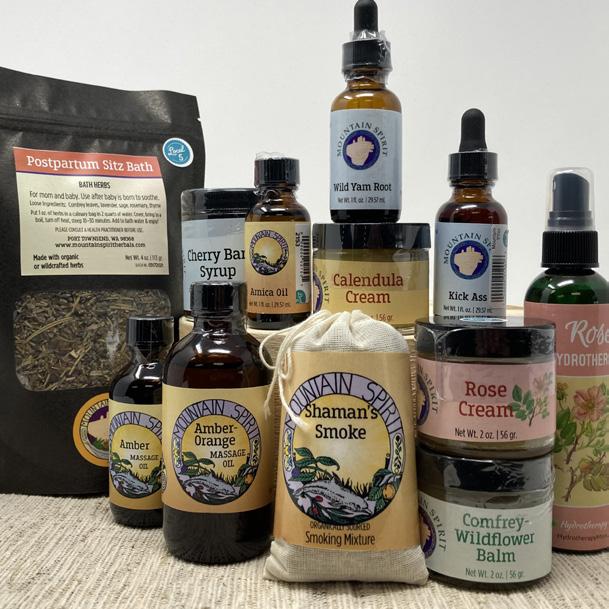




KEEP YOUR SMILE CLEAN AND GREEN
BY DANIELLA CHACEWe all know the importance of maintaining good oral hygiene, but have you ever stopped to consider the potential toxins lurking in your dental routine? Looking closely at your toothpaste’s ingredients is a good place to start. Making sure your toothpaste is ‘fluoride-free’ is important because even though it offers the benefit of strengthening teeth, it also mineralizes other tissues, most concerning is the pituitary gland, your body’s hormone regulator. In addition to fluoride, many toothpaste brands contain questionable ingredients, including artificial sweeteners, diethanolamine, phthalates, microplastics, polyethylene, and propylene glycol. Better options include all-natural chewable toothpaste tablets, tooth powders, or paste that come in glass jars.
Dental floss may seem harmless, but many brands use the same toxic stuff that is used in Teflon cookware: polytetrafluoroethylene (PTFE) and perfluorooctanoic acid (PFOA) to make floss slip easily between the teeth. Floss is also often coated in plastics, which leaves phthalate residue in your teeth and may contain parabens and synthetic fragrances. Look for natural brands made of cotton yarn or silk that are coated with plant-based wax and packaged
Another favorite is dr Tung’s yarn-like floss which now comes in paper containers. If toothpicks are part of your oral care routine, you might like dr Tung’s Perio Sticks because they are free of chemicals and flavorings, help reduce plaque buildup, are beneficial at loosening debris, and they also stimulate blood flow to gum tissues.

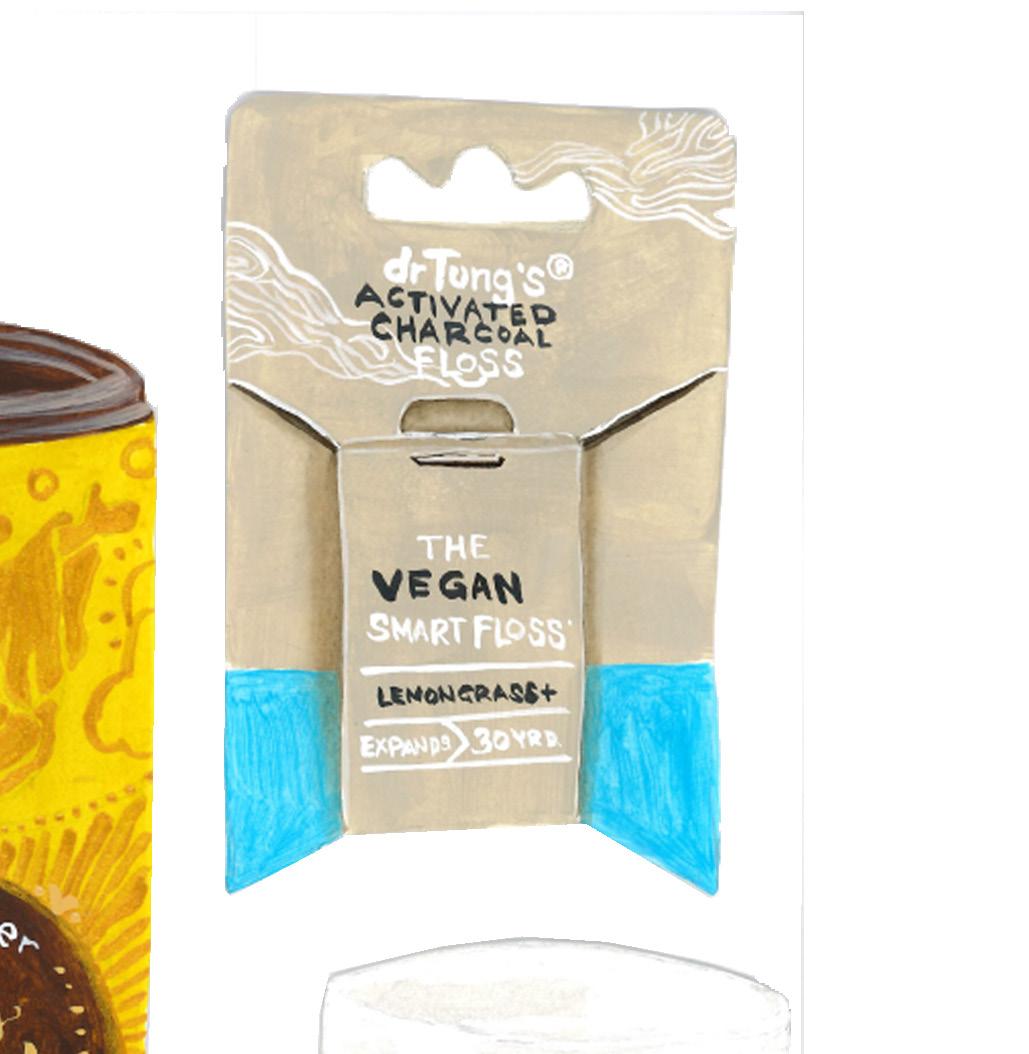

Lip balms often contain endocrine-disrupting chemicals, including parabens, petroleum, propylene glycol, and fragrances. Those of us who use lip balm, tend to use it daily, so it’s important to use products with clean ingredients.
Booda Butter Lip Balm is a great example of this and it comes in a paper tube rather than plastic. The cocoa is a treat for your lips and your tastebuds, made in Bellingham,WA.
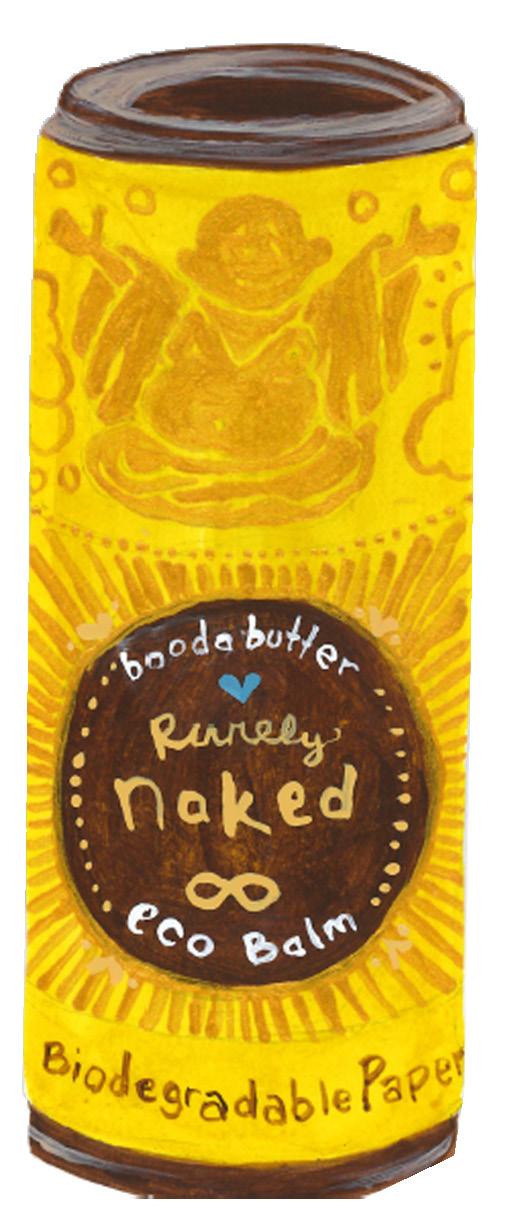


Detoxing your oral health routine is a great place to start to lessen your daily exposure and protect your overall wellness. Until we have better regulation, it is up to us to read labels carefully and choose the cleanest products available.

Daniella Chace is a local health practitioner specializing in whole plant food nutrition and toxicology. If you’re interested in reducing toxins in other areas of your home and learning about sustainable alternatives, check out Home Detox - Make Your Home a Healthier Place for Everyone Who Lives There (Storey, 2023), which is now available at the Food Coop and the Port Townsend Library. Visit @daniellachace on Instagram, and daniellachace.com to learn about upcoming classes and events.

PICK UP YOUR COPY OF HOME DETOX IN THE STORE NOW!

CHIMALOW PRODUCE
THE BEST SOIL EQUALS THE BEST PRODUCE
BY KATE NICHOLS, CO-OP MEMBERLocal farmer Laura Llewellyn says, “I grow good food because I want to eat the best-tasting food possible.”
Chimalow Produce customers tell her she has succeeded— the taste of her produce is distinctly better.
Llewellyn believes her produce is better because she uses holistically responsible soil management to encourage the biological life of the soil. Healthy soil is a high priority because it produces healthier, tastier, and more resilient plants. To achieve it, Llewellyn practices regenerative agriculture. She does this by being mindful of soil disturbance, addressing deficiencies in the soil, and implementing mycorrhizalfriendly strategies. She also uses cover crops and interplants within crops to encourage species diversity. Studies, and Llewellyn’s personal experiences, show that the results of such techniques are vigorous plants that are naturally
disease and pest resistant and have greater yields. This living soil creates produce that is flavorful, nutritious, and superbly high-quality. For the consumer, the goodness in the soil transfers to the plants, then to our own happy gut!
Llewellyn regularly tests her soil for micronutrients and adds what’s needed to balance the soil. She is thoughtful about addressing the deficiencies in the soil, making sure that plants can actually utilize all the soil’s nutrients. Mycorrhizal fungi play key roles by colonizing the root system of a host plant, providing increased water and nutrient absorption capabilities, while the plant provides the fungus with carbohydrates formed from photosynthesis. Mycorrhizae also offer the host plant increased protection against certain pathogens.

Llewellyn was the produce manager at the Food Co-op for five of the eighteen years she has been farming, so she also understands the produce market. She works four plots of land that equal 1.5 acres and has greenhouses on a couple of her plots so she can grow heat-loving plants like tomatoes and basil. She also experiments with season extension by growing kale in the greenhouses so it is available earlier in the spring.


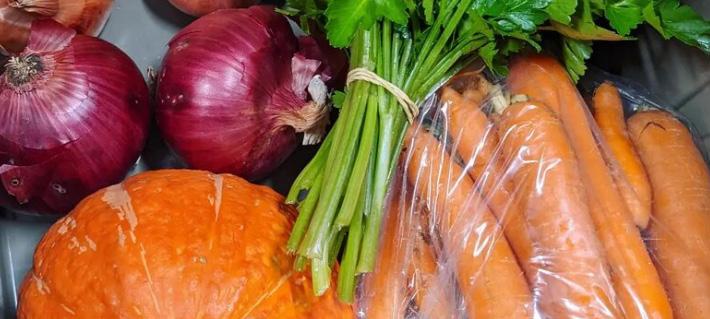
Although she is mindful of soil disturbances, she does use a tractor to till her one acre plot in Center Valley. In this field she plants row crops, such as carrots, broccolini, potatoes, onions, squash, and beets. Her three smaller plots are easier to work without tilling the soil, so she uses cover crops and a diversity of plant species on these plots, as well as covering them with tarps to flip from crop to crop.

There is still much to learn about biologically active soil. Science and Llewellyn’s knowledge of what makes good soil is still developing. But she can see the effects of her practices in a plot she farms on a hilltop near her house. There, the poor soil has responded to her care for the last six years and requires less amending every year.
Llewellyn would like to cultivate land security through a longterm lease or the purchase of farm land so she can scale up production, have wider crop rotations, and grow more cover crops. She is fully invested in the soil she currently grows on, but she is operating on year-to-year leases. Her goal is to continue to tend the soil and grow Chimalow Produce for many years to come.
I WANT TO SHOYU SOMETHING!
BY LIAM CANNON, POINT OF SALE TECHNICIAN ONEStanding in front of the copious choices of soy sauces at the Co-op can be anxiety producing. Which brand or type do I choose? Will I cause an irreversible disaster in the spacetime continuum if I select the wrong one?
Let’s start from the beginning. Soy sauce is considered the oldest condiment in the world, with its origin currently dated back over 2,000 years ago to China during the Han dynasty. It was more like a paste then and not the liquid that we know. This paste was created out of necessity to preserve meat and other foods that were prone to spoiling. Originally just soybeans fermented for at least three days, it now includes roasted grains such as wheat or barley. After fermentation, it was infused with a yeast mold such as lactobacillus to break down sugars into lactic acid. Then salt or brine was added, and it was then allowed to ferment for a lengthy period. Current practice typically requires a six-month fermentation for basic supermarket brands to several years for high-end sauce.
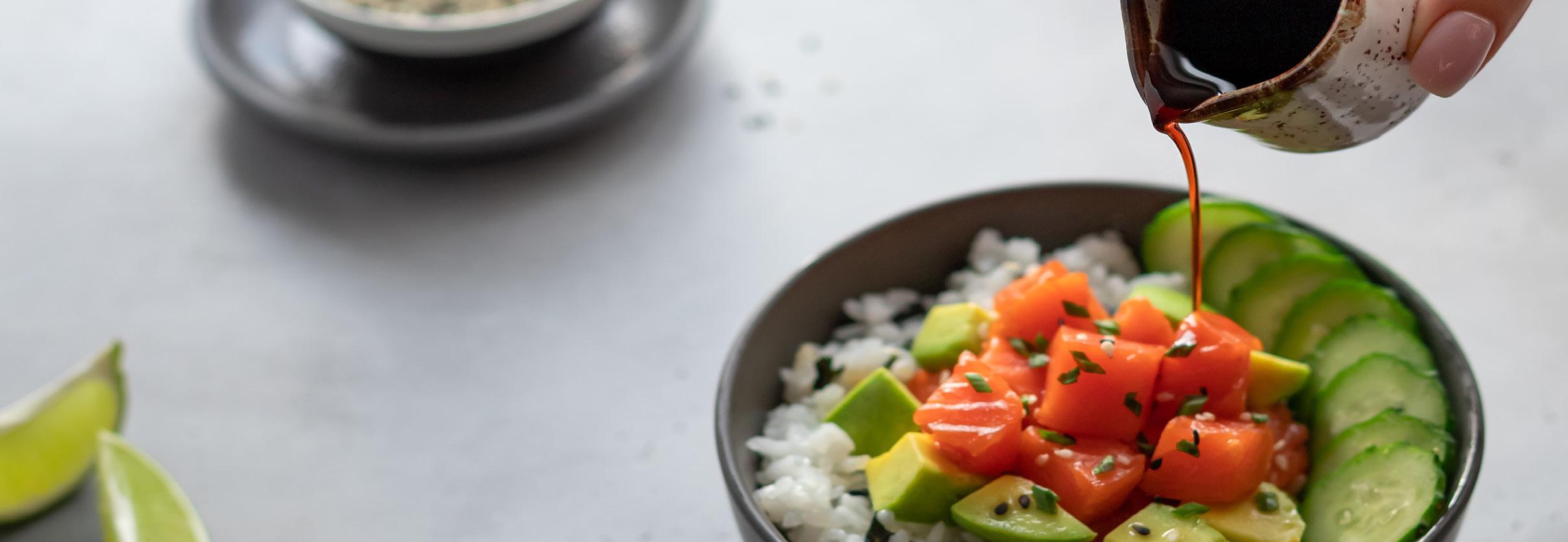
Soy sauce made its way to Japan in the 7th century when Chinese Buddhist monks introduced their vegetarian cuisine. The Japanese quickly embraced this new sauce, replacing their fish-based gyosho condiment. They eventually modified the recipe making it less like a paste and more like a liquid. An even ratio of soybeans and wheat was used, resulting in a sweeter, less harsh flavor. By the 17th century, the Japanese became the predominant producer of this sauce in the world and they still are today.
Japanese soy sauce made its way to Europe in the 18th century, primarily due to export agreements with the Dutch East India Company. Europeans were unable to brew their own because they did not have access to the fungus required for fermentation, so they had to rely on importing the sauce from Japan. It became a key ingredient for Britain’s wellknown creation Worcestershire sauce in the 1820s. It made its way in small quantities to the United States in the early 19th century and began showing up in some cookbooks, although with no indication of what type or amount of the sauce to use. In 1905 the Yamajo Soy Company would be the first to produce Japanese-style soy sauce in this country at a facility in the Territory of Hawaii. Shortly after, they changed the company name to the Hawaiian Soy Company. As with a lot of products in this country, it was only a short time before counterfeits were being produced. Fakery was so rampant that scientists were advertising their services to offer a means of distinguishing the difference. Unlike “quackery” medicines that were also an issue in that period, we did not try to eradicate bogus soy sauce—in fact, we embraced it. Some, like the squishy packets we get from take-out restaurants, rarely have a drop of soy in them. Today imitation sauces take only three days to produce and typically include hydrolyzed vegetable protein instead of soybeans, corn syrup or inferior grade sugar, salt, artificial coloring, and chemical “flavor enhancers” not unlike monosodium glutamate.
For the Japanese, the authenticity of soy sauce is a matter of cultural pride. Japan has unsuccessfully pressed the United Nations food standards program to set an official international standard for soy sauce. They have asked the United States on more than one occasion to regulate soy sauce packaging, at the very least to indicate if the product is traditionally made or not. Each time, we have declined to consider their proposal. Bruce Silverglade, legal affairs director for the Center for Science in the Public Interest, based in Washington, D.C., says, ‘’Americans have generally accepted imitation soy sauce, but such products are offensive to those nations who know what soy sauce really is.” Imitation soy sauce is too big an industry to consider jeopardizing it by relabeling their sauce. Japan recognizes five types of traditional soy sauce, or shoyu (pronounced show-you), classified by Japan Agricultural Standards as common, light color, tamari, refermented, and extra light color.
Koikuchi (coy-coo-chee) (Common)
Dominating the market, this is a general-purpose condiment used in cooking or served at the table. It is salty and has a deep umami (savory flavor), rounded sweetness, and refreshing acidity.
Usukuchi (oo-soo-koo-chee) (Light color)
This light-colored soy sauce uses 10% more salt than common soy sauce to slow the fermentation process. Its color and fragrance are reduced to preserve the color and taste of the ingredients in cooked dishes such as whitefish or vegetables.
Tamari (tuh-maa-re) (Tamari)
Tamari was originally the liquid drawn off fermenting miso. It is generally wheat-free, a little thicker than other sauces made from soy, with a stronger flavor. It is sometimes called “sashimi tamari,” as it is commonly served at table with sushi and sashimi.
Saishikomi (sigh-she-co-me) (Refermented)
While other soy sauce is made by blending koji mold with brine, this type blends koji with soy sauce, which is why it is called “refermented.” It is naturally sweet, with a richer flavor, and is mainly used as a condiment for foods like sashimi, sushi, and chilled tofu.

Shiro (she-row) (Extra light color)
Sometimes called “white” due to its pale amber color, shiro has a milder flavor appropriate for more delicate dishes or sashimi made from white-fleshed fish. It is also used in rice crackers and pickles.
If you are looking for a traditional soy sauce in the store, the first place to look is on the bottle’s ingredients list. It should include the four basic ingredients of soybeans, wheat, water, and salt. Stay away from soy protein as it is not the same as soybeans. Also look for “brewed” or “traditionally brewed.” If you don’t see this, it may be an indication of a “chemically processed” sauce. And by the way, if you’ve heard there are exacting protocols for using soy sauce and general table manners when eating sushi, check out the sidebar.
I hope that you can now stand in the international section of the Co-op without scratching your head and saying “soy what” do I use. You will know what sauce to cook your whitefish in and which to dip your sushi in (it’s alright to do that at home).
JURI’S 5 SUSHI TIPS
By Juri Jennings, Board President
First and foremost, avoid thinking you should have to eat sushi in a certain way. I find that culture is fluid because it keeps on evolving—some traditions stay, some are diluted, and some take on another form. On the other hand, there are a handful of traditional ways that can help you enjoy sushi, and below are tips to get into the mindset of a Japanese person out to enjoy sushi. In the United States, people often envision rolls when they think sushi, while in Japan, when sushi comes to mind, most people think nigiri (see photo), where the rice is molded by hand and topped with very fresh fish (usually). These tips are for enjoying nigiri sushi.
1. Enjoy the beauty of the ingredients, their smells, the texture, the aesthetics, the journey of the fish, the rice farmer, the artisanal chef who made the hand-formed sushi. This means eat the sushi quickly while it is at its freshest. This also means it’s best to not have other smells going on while eating sushi, like incense, perfume, smoking, etc.
2. The skilled way to eat sushi is to tilt the piece of nigiri a bit upside down and dip the edge of the fish to gently touch the soy sauce. This way the rice will not touch the soy sauce and hence the sushi will not fall apart. You want to keep your plate always looking nice and clean.

3. Although it is not the proper etiquette, some people like to mix the soy sauce with wasabi because the wasabi is too spicy by itself. The proper way to add wasabi is by pasting a tiny bit on one side of the fish and then dipping the other side of the fish into the soy sauce bowl. It is interesting to note that most sushi places in Japan already have the wasabi sandwiched between the rice and fish, so you don’t have to worry about this. You can also ask them to not put wasabi in the sushi (and that’s also okay) if you don’t like it spicy.
4. Eating mild-flavored fish first is favorable; you don’t want to taint your tongue with a more pungent flavor, and that’s why they say to eat the lighter colored fish first. So, your unagi (eel) with the sweet unagi sauce on it or tamago (egg), which is sweet with rich taste, would be best eaten last.
5. You can use chopsticks or you can eat sushi with your fingers. Both are okay. However, the ginger should always be eaten with a chopstick. Also, you want to ideally eat the sushi with one bite. Unfortunately, you can’t often do this unless you go to a restaurant where the chef is making your sushi right in front of you and you can ask them to make the sushi with less rice. Give nigiri sushi a try if you haven’t yet!
LAMIA CUCINA ESTIVAMY SUMMER KITCHEN
An excerpt of our upcoming Italian Community Cook
by Sidonie Maroon, Culinary Educator for the Food Co-op
Each quarter the Food Coop invites us to “Community Cook” from recipes I’ve developed inspired by a world cuisine. This is a fabulous way to build ties, share food, try new cuisines, and increase our skills. So far, we’ve cooked Greek, Vegetarian Indian, and Vietnamese. You can access all the recipe pamphlets and instructional videos on the Coop’s website under “Community Cook.”
Love Letter to Food
This summer we’re cooking Italian, and I’ve planned my own staycation to coincide. I’m calling it la mia cucina estiva, my summer kitchen. It feels joyful, like the way I used to get excited about my library’s summer reading program as a kid. I’ve curated adventure themes for myself before, but this one is special.
Why Italian?
I once taught a class exploring Italian regional cuisines and fell in love with the history and culture. It brought me out of my gelato, pizza, and spaghetti limitations, and opened a world of diverse ingredients, techniques, and ways of approaching the table.
Why a Staycation?
Why not just go? Because I’d rather tend my garden and cook. I’m a contented homebody, so I’ll have to use my imagination, but that’s ok because I’ve got one.
My Wish List
Cook Regional Recipes
Maybe I’ll devote meals to regional areas. I’d like to try recipes from Florence and Tuscany. How about cooking the regions of Rome? And I want to explore the baking traditions of Sicily.
Cookware and Dishes
The beauty of the internet is that I won’t need to own Italian cookware and dishes to appreciate them. From the Renaissance to Futurism, there will be rabbit holes to jump down, and much to learn about artisan crafts.
Qualities to Embody
Italy is the birthplace of the Slow Food movement, so I’ll dig deeper into its philosophy. Conviviality is another important idea. I want to slow down and enjoy the summer! Appreciation, delightful conversation, lively passion, and a wholehearted graciousness are all qualities to cultivate—or assaporare, to savor.
Playlists
Maybe host movie nights featuring Italian divas from the past (look for dinner scenes). A cooking playlist of Italian dinner music.
Books, Cookbooks, Novels
I have current favorites, but who are new people and what are the places to explore? Curating my summer Italian culinary reading is worthwhile. Reread all of Marcella Hazan. Look into Italian food fiction. Italian food history authors?
Build a Pantry
Olive oils, pastas, vinegars, cheeses, sun-dried tomatoes, anchovies, olives, marinated vegetables, garlic, charcuterie, coffees, wines….
Vegetables and Fruit
Give more attention to chicories, endives, artichokes, and basil. Lots more attention to herbs! Maybe grow Italian seed varieties. Learn new ways of cooking ingredients I already use. Try new sauces and spices. Go to the Farmers Market more often. Eat lots and lots of local fresh fruits and vegetables from the Food Coop!
Learn italian phrases and use them!
Allora, ti è piaciuto il pranzo di oggi? Tutto delizioso, grazie!
Set up an Italian Themed Outdoor Table
We’ll eat outdoors with some Italian flair. I’m considering some pots of herbs on a little trattoria table with a cloth. Of course, the joy of friends and family sharing meals together is key, because good food is all about the people and conviviality.
Cucina Felice
These are just aspirations for my summer kitchen. I’ll accomplish some and let others go, but like travel, it’ll
Tuscan Kale Pesto

Makes 1 1/2 cups
Ingredients
4 cups black Italian kale, chopped with tender stems included
2 cups parsley including stems, chopped
1 teaspoon fresh sage, chopped
1 tablespoon sea salt, for blanching water
1 teaspoon anchovy fish sauce
2 teaspoons balsamic vinegar
¼ teaspoon red chili flakes
2 large cloves garlic, chopped
½ cup extra virgin olive oil
Sea salt to taste
Directions
1.Before preparing the ingredients, fill a pasta pot with water and bring to a boil. Add the salt once it’s boiling.
2.Once the water is boiling, add the kale, parsley, and sage and bring it back to a boil before timing 3 minutes. After 3 minutes, or when the kale is tender, use a skimmer or strainer to remove the greens from the water. Save the water for pasta or broth.
3.Shake the excess water off the greens and add to a blender or food processor with the other ingredients. Blend until smooth. Taste and add salt if needed. I use a Vitamix to make it ultra smooth, but it’s not required.
4.Serve or refrigerate and use within a few days
Sale Alle Erbe Delle Port Townsend
Makes 1 cup
Ingredients
1 cup/200g coarse sea salt (I used a bulk Celtic salt, it’s moist with a gray green color and perfect for seasoning salts)

3 tablespoons plus 1 teaspoon/19g fine sea salt (I used bulk Redmond Real Salt)
½ cup (lightly packed)/10g fresh rosemary leaves, not stems
3 tablespoons/45g (about 6 to 8 large cloves) homemade garlic paste
2 tablespoons/3g chopped fresh garden sage leaves
1 tablespoon plus 1 teaspoon/9g whole black peppercorns
Directions
1.Gather ingredients.
2.Using a spice grinder, grind the peppercorns with the fine sea salt.
3.Peel and chop the garlic and using a small food processor, grind into a paste.
4.Measure and chop the herbs, then grind together until fine in a small food processor.
5.Combine the coarse salt, fine salt and pepper, herbs and garlic paste, and pulse until evenly combined. It will be moist.
Put into small jars. You can use the salt right away, but the flavors will meld and deepen with time. Use within six months.
VOTING GUIDE TO THE 2023 Board Elections!
Voting begins the day of the annual meeting, Tuesday June 27th, at 12:00 pm and ends at 9:00 pm on Monday July 10th. All active members—that is members who have shopped at the Co-op within the past year and are paid up as of May 31, 2023—are eligible to vote. Please note that each membership equals one vote. While other people in your household may share your membership number when shopping at the Co-op, only the person who holds the membership may vote.
As a bonus, for each vote, the Food Co-op will donate a dollar to the Food Bank!
This year we have three seats, two for 3-year terms and one for a two-year term. Each candidate is running for a particular seat, and you may vote For or Opposed—or choose Skip if you have no opinion—for each candidate. A candidate must receive at least 51% For votes to gain the seat, which means that every vote counts.
Voting will be online and in the store. Ballots will not be mailed to members.
There are three ways to vote:
1. On June 27th, if the Co-op has your email address on file, we’ll email you instructions and a link to the vote. Voting opens at noon.
2. If you don’t receive an email, you can go to The Food Co-op website (www.foodcoop.coop) and sign up to be e-mailed a ballot.

3. If you prefer paper to computers, you can fill out a paper ballot at the store. Look under the Board’s board for ballots and envelopes. Put your ballot in an envelope, sign and write your member number on the envelope, and then deposit it in the blue ballot box.
Questions?
Contact our board assistant at boardassistant@foodcoop.coop or 360-379-5798.
MEET THE CANDIDATES
In addition to their statements below, the candidates will be answering questions at our Annual General Meeting on Tuesday June 27th (6:30–8:00 pm) via Zoom. Members can register for the meeting on our website (www.foodcoop.coop) until Friday June 23rd
Cameron Jones (3 year term)
I remember distinctly my first time trying a fresh beet from the ground. It was around 2006 and I just graduated high school. The beet was bought at the Port Townsend Food Co-op, and it blew my mind. Up until that point, fresh produce and unprocessed food were not a prominent part of my lived experience.
I grew up in a military family, moving around the country in areas like south Florida where fresh food and produce could be abundant, but were completely inaccessible and even the concept of ‘fresh food’ was alien. When I had that beet it’s not an understatement to say it completely transformed my idea of what ‘fresh food’ meant. My experience isn’t uncommon. This lack of relationship and access to nutritiously dense food is common in areas suffering from food apartheid and it disproportionately impacts communities of color. I say all this, because a simple beet led me on a path of healing through reconnecting with the land, learning how Afro-Indigenous food systems contributed to resilient communities and how that connection is lacking today.From that beet to now a permanent resident since 2013, I’ve slowly become an advocate for equity and organizer in our community. As an organizer with Black Lives Matter Jefferson County & Well-Organized, a substantial amount of our focus is on food access. So, I have gratitude for the Co-op and its role in our community as a positive force for addressing the ever-changing challenges that climate change brings. The Food Co-op’s End of ‘Outreach’ feels particularly important to me as I believe there is strong potential for collaboration and synergistic opportunities with our increasingly diverse population. I feel my experience as a community organizer and equity advocate will be valuable to ensure the Co-op is an accessible and equitable hub of resiliency.

Watch the
“meet the candidates” video here!

Sasha Kaplan
I moved to Port Townsend from Portland, five years ago. My first two acts to plant myself here in this unique community were to get a lifetime PT Co-op membership and obtain a library card. Since I was eleven years old, I’ve been involved in food. That was the year I took over the Thanksgiving dinner for my Dad and brothers while my Mom was hospitalized. I dutifully watched Julia Child on PBS and worked for my cooking badge in Girl Scouts. I’ve been nurturing bellies ever since.
I put myself through college cooking in and managing restaurants. During those years I belonged to the local co-op in New Haven, CT. That was the last time I joined a co-op till moving here in 2017. Given we are in a community of about ten thousand, I felt the co-op, the farmer’s market, and the local food bank formed the food hub for our town. And I served on the board for the farmers market for three years. I’ve been volunteering at the food bank making lunches for the other volunteers, using donations, including some items from the Co-op for five years. In addition to feeling pure joy feeding others, I am passionate about sharing that love of food with others, whether teaching a class to children/adults or sharing the demo table to give and get ideas on how to make food go farther, how not to waste food, and how to use locally sourced items purchased at the Co-op. I love knowing that by shopping at the Co-op, I’m supporting my community including local farmers/producers.I’m running for the Co-op board to support all of that in my community.
Claire Thomas (2 year term)
I am running for my second term on the Food Coop Board of Directors. It has been such a wonderful time for me on the Board, serving as Vice President and Secretary at different times. I have learned so much and gotten to appreciate our Food Coop so much more by being part of this incredibly passionate group of people.

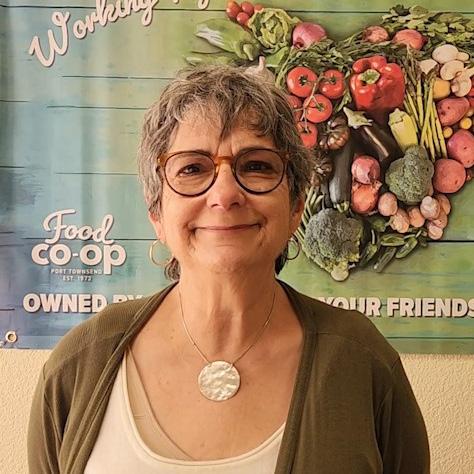
My career is in human relations and people’s quality-of-life while working. This work on the board of directors lends itself so well with my skills from HR but also my HR skills can come in handy for the board! Most of our current board members have been active for a few years now, and each of us brings a very valuable skill set and sense of service and passion to the group. I know any new board members will do the same. It is truly an honor for any organization to have folks who want to give their time and support. We have been studying and reviewing our Ends policies in preparation to rewrite them within the next year. My goal, and I have also heard this from fellow board members, is to make sure our Ends policies are easy to understand for our member-owners. It is also important to us that our general manager is able to make interpretations that guide and direct the store in the direction set by the board, but also leaves room for growth and creativity in ways beyond what the board could conceive of.
I’m so thankful for this Co-op here in Port Townsend. I truly don’t want to imagine our little town without it so I’ll do what I can to be of service.
Strengthening our Community!
OUR ANNUAL REPORT FOR


2022
Why We Exist—Reviewing and Revising the Food Co-op Ends
BY JURI JENNINGS, BOARD PRESIDENT“Ends are what we strive to be in the end.” I was a bit relieved that I got such a swift answer from a Co-op staff member (my husband, Roarke) to my question “What are our Ends?” because I was starting to feel a bit critical of myself—maybe the board hasn’t communicated to our member-owners what this word “Ends” meant. The Co-op board governs through a system called “policy governance,” and some of its language is not always relatable, so to speak. It’s easy if we translate the policy governance lingo “Ends” as “Goals,” but an End is not quite just a goal. A good End says why the Co-op is here—it encompasses who End serves and how they benefit, and ideally, establishes priorities, considering our resources.
The board has been working on revising our Ends for a while now, for about two years. We have been taking our time because the Ends don’t need urgent revision—they work for us, and a recent survey showed our members like them—and we want to ensure we make them relevant to the time that we live in now. Pre-Covid and Post-Covid seem like different era, don’t they? So much has changed, and we have learned that the Co-op must be agile and creative to navigate through the difficult times ahead, while we simultaneously support the local productions (farms, producers, etc.) that our community resilience depends upon.
As part of our Ends work, the board started holding study sessions early last year, inviting local farmers and other local partners to speak to us so we can learn what is most pressing in their work. We also spent time over the last two years looking at our Ends through the lens of diversity and equity, which helped us both think about our Ends in a new light and learn about the issues and opportunities in diversity and equity. Early this year, our general manager, managers in the store, and board members came together for a weekend to discuss our Ends, facilitated by
our consultant from Columinate (a co-op that supports co-ops). We also tabled at the store and conducted an online survey to hear from our member owners.
Our first two Ends, which are about Food System Development and Market Relevance, came to the top in the survey, although we heard from many members that they thought all our Ends were important. Especially important to our members are organic and local, member health, education, community, affordability, and supporting staff. Also, many members pointed out that our Ends are interconnected and affect one another. For example, if our environment is not sound, our local food system will not thrive. Or without our local food system, we cannot be environmentally responsible. Now, how do we make an End that will be the most impactful and trigger all that we have identified as important, like a ginormous wave that creates a micro ripple dance as it passes through time. We continue to work with our cooperative consultant as we figure out what our Ends should say and the best way to say it. To borrow his words: “An End should not be a pie in the sky; it should be achievable in, say, a decade.”
We are now at the final stage of drafting our Ends, and I cannot believe that by the time this report comes out, we will most likely have a draft to present at our Annual General Meeting.
What has come out of all our Ends work is that we committed to discussing and hearing from as many folks as possible about “what matters” and how we can improve our impact. And that alone perhaps validates the existence and creation of our Ends—the fact that it sparks a conversation about what we do and why we do it.
With more to come
OUR CO-OP STRATEGIC ENDS
1.Our community is well-served by a strong cooperative grocery store, integral to the lives of our customers, our farmers, and our producers.
2.Our community has a resilient local and regional food economy, supported by our Co-op and our community partners.
3.Our staff and board have the knowledge, skills, and passion to make our cooperative thrive.
4.Our members and customers are proud to shop at a local cooperative grocery that is working to reduce its impact on the environment.
5.Our community is informed, engaged, and empowered to join us in making a difference.
COMMUNITY AT THE CO-OP
 By Kenna Eaton, General Manager
By Kenna Eaton, General Manager
Every time I use the word interesting, I am reminded of that phrase, “May you live in interesting times”—and 2022 was another interesting year. Truly. During my 40 years of working in the cooperative grocery market, I’ve not seen such a shake up, from staffing challenges to price volatility to supply chain disruptions—it was one thing after another. And it still is that way, frankly. One could even say it has gotten more interesting, not less!
Throughout these challenges, the Co-op staff stepped up to do their very best to make it all work. Keeping the shelves filled has been a moving target. Bringing products in that are affordable (check out our Co+op Basics for great food at great prices) and making sure we have enough staff in the right places at the right time has kept us on our toes. But we did it, and we did it well! I’m so impressed that, in spite of all of those challenges, we were able to make a profit. Dang. And in case you were wondering, yes, we did share those profits with our teammates back in November, and we will also be declaring a patronage dividend to our members (more about that elsewhere in this report) as another benefit of membership.
During the pandemic, due to safety concerns, we implemented multiple storewide operational changes, including closing our dining room and our vendor booth. In our recent member survey, many of you mentioned missing those areas, which you felt were important to the sense of community at the Co-op. These responses made me think long and hard about how we define community. Is it about being physically in a space with others? It’s certainly a part of it. Many members love meeting their friends and neighbors in the aisles of the Co-op, stopping to discuss life and family over their shopping baskets. But others don’t always like this aspect of shopping at the Co-op—in fact, recently I was asked to offer members some type of disguise that would let others know they don’t want to chat! The dining room was an extension of that social space, or sometimes just a friendly space where one could eat lunch alone. And the vendor booth creates community in a different way, because it lets us support our neighbors in their endeavors. However, due to the ongoing space challenges we are facing, it is hard for me to imagine either of those areas reopening anytime soon. I’ll be sure to let you know if or when that changes.
As we emerge from the stresses of years of Covid, now might be a good time to think about what we mean by community. As the pandemic passes, we are realizing that life will not completely go back to the way it was. It can’t and it won’t. After three years of establishing new habits, such as shopping or working online, implementing systemic changes, and renegotiating how we live and how we work, we are on the cusp of redefining and regenerating our community in new and creative ways. I actually see this as an opportunity for us all to do better in all aspects of life, to start afresh and redesign what we do and how we do it in ways that are more inclusive, more just, and allow more of our community to flourish.
How do you define community? And in what ways can you reimagine our community? I look forward to digging into the word “community” with our members as the year unfolds as well as finding new ways to embody the term in our community-owned grocery store. I hope you will join us at a series of events we are planning in early 2024 for some robust discussions on community and discovering how we can make this one even more cooperative.
Yours in cooperation, Kenna
LOVIN LOCAL

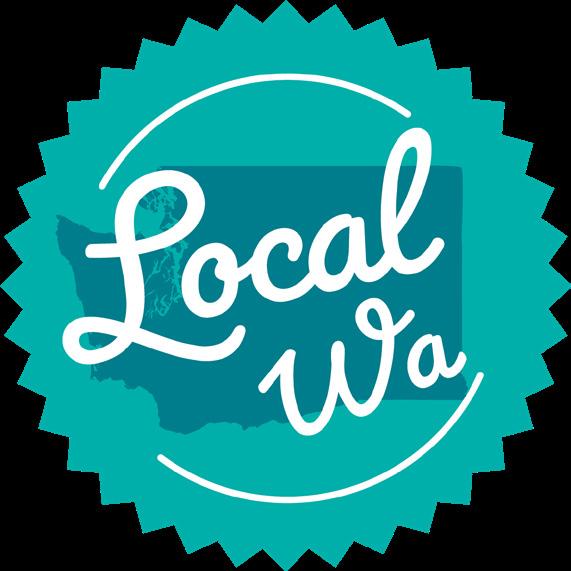 By Deb Shortress, SIPS Manager
By Deb Shortress, SIPS Manager
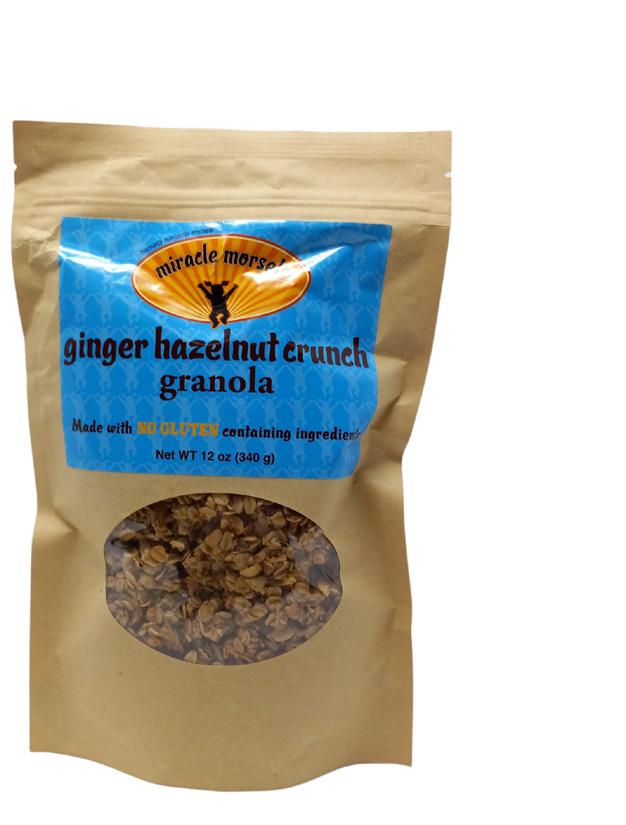
When I think about 2022 and our focus on local, I want to highlight our local partnerships.
In 2022 we celebrated 50 years of “Lovin’ Local” with some special Local 5 “golden products.” (Local 5 is our term for products from Jefferson, Clallam, Mason, Kitsap, and Island counties.) During the year we sold over 640 quarts of Elevated Ice Cream golden milk ice cream, over 500 pounds of Miracle Morsels golden ginger hazelnut granola, over 200 jars of Midori golden beet kraut, over 100 packages of Reko’s golden pumpkin dog biscuits, plus many other special local products. Thank you to all the vendors who partnered with us to provide golden products for the store, for our anniversary party, and for sampling in the store. We added seven Local 5 farmer/producers and five Local WA farmer/ producers during this year, and 80+ new Local 5 products and 150+ new Local WA products to our shelves. I am also excited about the partnerships some of our producers and farmers are creating. For example, Goodness Tea has a seasonal ginger chocolate made with SpringRain Farm ginger, and they incorporate local ingredients in many of their products.


Let’s also celebrate the distributor partnerships that we have. Key City Fish delivers meat and seafood to us daily. They also pick up product on their Whidbey Island delivery route and deliver it to us—Little Red Hen bread, Puget Sound Food Hub products, Lummi Island Wild Co-op fish, and fresh seasonal produce from Ralph’s Greenhouse.
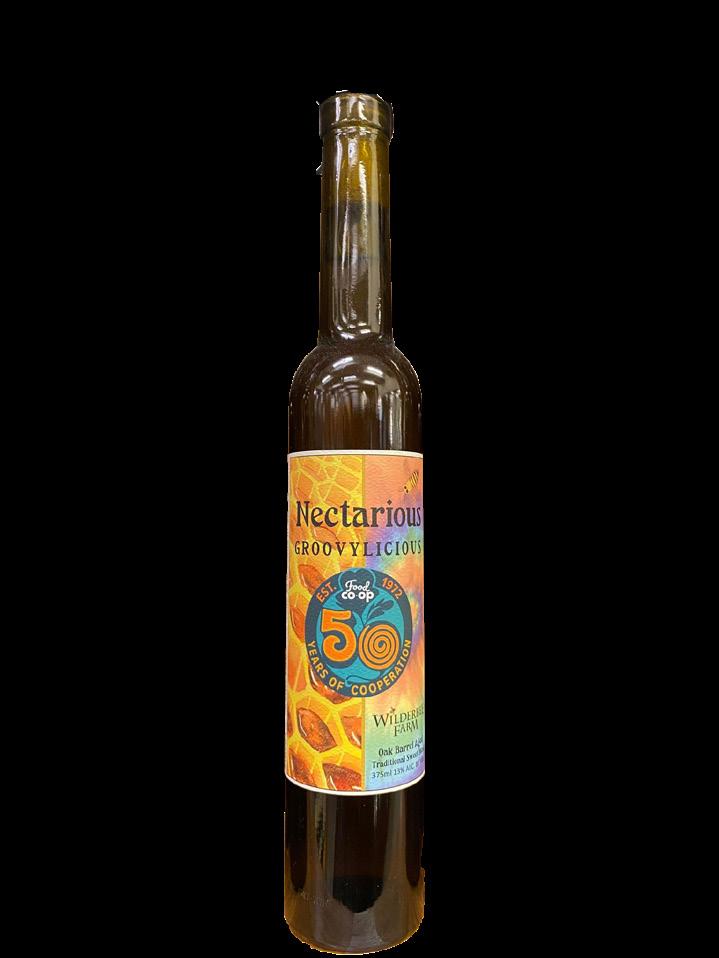
Puget Sound Food Hub is a co-operative that distributes products from over 60 western Washington producers. The Hub works well for us, because we can order the products that we need from just one vendor and to have it all delivered together. We have been ordering from the Food Hub for almost three years.
I’m excited to see these partnerships grow in the coming year.

Thanks to our local partners who collaborated on 50th anniversary products with us!
What is Community?
BY LISA BARCLAY, BOARD SECRETARYThe mission of The Food Co-op is “working together to nourish our community.” It’s a powerful statement, expressing an aspiration that all of us—staff, members, board, farmers, vendors, etc.—work in concert to achieve this goal of nourishing our community, both physically and emotionally. But what do we mean by community? Or perhaps another way to ask the question is “what makes a community?”
Everybody has different ideas about what makes community. Is it dependent on a place? On a shared sense of who we are? Is it based on inclusion or exclusion? Does it require interaction? As I was perusing the internet, thinking about community, I came across a definition in a paper from Brown University that I think makes a good starting point for thinking about community.*
The paper listed five components of community: Locus—a sense of place, perhaps a neighborhood or a place where people gather, such as a church or recreation center.

Sharing—common interests and perspectives.
Joint action—common activities such as sharing tasks and helping neighbors.
Social ties—relationships creating a sense of cohesion.
Diversity—not primarily ethnic but all types of social complexity.
Let’s consider these aspects of community at the Co-op, especially in relation to the last few years. Covid tested the strength of our community, both physical and emotional. We had to close our dining room and the Alcove, two places where people could physically meet, but the Co-op itself is a shared space, where we see and chat with our neighbors— both staff and other shoppers. During the pandemic, we couldn’t shop as often to keep the space from overcrowding, and we had to put up physical barriers to protect against spreading the disease, which really brought home to me how much I enjoyed and relied on the cozy, friendly atmosphere of our store.
Our common perspective was challenged because we had different ideas of what personal freedom and community health required, but we still came together in our concern for the environment, belief in supporting our food shed and farmers, in our care for our neighbors—and our love of good food, of course! We also excelled in “joint action” during the pandemic, organizing ourselves to shop and deliver food to those who could not come into the store. We supplemented that effort by setting up an online shopping option, so people who could not come in the store or who could not wear masks could still get their food from the Co-op. Staff cleaned, cleaned, and cleaned some more, and customers adjusted their shopping habits to fit the new reality, helping keep each other safe.
Social cohesion and relationships are complex at the Coop, as it’s the nexus a lot of relationships between staff, members, board, farmers, vendors, etc. Thoughtfulness and kindness are cornerstones of successful relationships, and we mostly do this well, but on occasion, in the stress of the moment, we sometimes forget to be actively kind to each other—we forget that the person we are talking to is a neighbor. We all have these moments. I know I do, but I hope fewer of them as I get older.
Diversity is not something one automatically associates with community, since it seems the opposite of cohesion. But it makes sense, because there is strength in inclusion over exclusion. Let’s take farming as an example—farms with a diversity of plants are more resilient than farms with acres and acres of one or two crops. If something goes wrong, you still have something to eat and sell. Of course, humans are not plants, but the idea still holds true—for instance, we are an aging community, which is (literally) not sustainable. We need people of all ages in order to be resilient and forward looking. Interestingly, Covid has made us more diverse, as we have seen more young families move to town—please make them welcome! Diversity can also mean different backgrounds, different means, different ethnicities—all of which bring a variety of experiences and ideas to the community, making it stronger and more resilient.
In any community, some of these five components will be more evolved than others, but each of them gives us something to think about, and perhaps strive for. What do you think creates community and keeps it strong? Now that we are, hopefully, moving away from the stresses and restrictions of the pandemic, The Food Co-op plans to host some discussions about community and how to strengthen it. We’ll have these during the quieter months of the year, since we are such a busy community, so keep an eye out for announcements for some get-togethers next January or February. And in the meantime, come visit with us in the store when board members do our demos of local products.
*https://www.brown.edu/research/research-ethics/sites/brown.edu.research. research-ethics/files/uploads/Who%20is%20the%20community%20-%20 Phil%20Brown_0.pdf#:~:text=1%29%20Locus%2C%20a%20sense%20 of%20place%2C%20referred%20to,gathered%20%28such%20as%20a%20 church%20or%20recreation%20center%29
SUSTAINABILITY AT THE FOOD CO-OP
BY KENNA S. EATON, GENERAL MANAGERSustainability: the ability to be maintained at a certain rate or level.
One of my goals as general manager is to keep the Co-op sustainable, or better, for our next 50 years, which entails us being judicious about where we invest our energies and our resources (people, money, and time). Recently, as the board and I embarked on revisiting our strategic goals, we conducted a member survey asking what is important to you. Not only did we ask you to rank our goals (which we call our Ends—the outcomes we hope to realize in our community), we asked you to tell us which issues concerned you most. While housing was frequently cited, so was sustainability, or more specifically, issues related to climate change, including sea-level rise and food scarcity. These concern us, too, and we’ve definitely got them on our radar. Then there are other types of sustainability, which presume that resources are finite and should be used conservatively—for instance, working to reduce our carbon footprint or keeping our financials healthy.
While Covid has complicated our efforts to strengthen our sustainability over the last few years, we were able to maintain the programs we had in place, such as diverting food away from the landfill. Additionally, we continued to collect and recycle plastic bags as well as collect, sanitize, and offer free jars in for bulk goods. In fact, we continued to support all of our sustainability programs, which is mighty impressive to me. True, we did stop some of them briefly while the rules around safety evolved, but they were reactivated as soon as possible.
We also continued to work to find the most sustainable packaging and food containers. This is always complicated by the fact that food makes most eco-packaging start to disintegrate almost immediately, plus compostable containers are still not compostable in our county. We did find reusable containers for the deli—those black containers and their lids can be returned to the store, and we sterilize them to use again. Additional considerations affect both us
and our suppliers. For instance, regulations mean even local suppliers must often use plastic to wrap their products—such as fish—to keep it safe as it travels to us. Also, the healthrelated issues that arose during the pandemic increased the number of plastic gloves and masks that were used and thrown away, something that we don’t like, but regulations required. Now, as we emerge from Covid, we are moving forward again. One new project we’re excited to support and promote is PT Potential, a local organization that collects and repurposes plastic lids and can carriers. Please join us in helping divert those items from the landfill. You can also volunteer with PT Potential, or if that doesn’t work for you, consider buying one of our repurposed banner bags—100% of funds generated go to PT Potential.
This year our sustainability efforts will also focus on ensuring our facilities are in good shape. In the bulk room, for instance, the old dining room windows are failing, so they will be removed and replaced with watertight walls. This change will be more energy efficient, plus it allows us to rethink how the bulk room operates. How does it flow, for instance, and does the shelving and layout make it easy for you to buy as much or as little as you need. Keep your eyes peeled for updates on this work and any short-term or long-term changes. We’re also looking at a new, more energy-efficient cheese cooler as the old one leaks water (which is why there are always towels tucked in at the base), repairing the walls of the box bin nook, plus other behind-the-scenes changes we think will make us more effective at sustaining our community and our co-op while we ponder how to be more resilient in the future, whether it is related to place, people, or prosperity.
Working together, we are strengthening our vision of a coop that is resilient, responsive, and regenerative, as well as sustainable, which to me is one more definition of community.
RECYCLING AT THE CO-OP

Shopping in bulk reduces single use plastic, especially if you use the paper or cellulose bags (which are compostable). We have many items that can be purchased in bulk—both food and other items—including eggs, olive oil, spices, dish soap, shampoo, and lotion
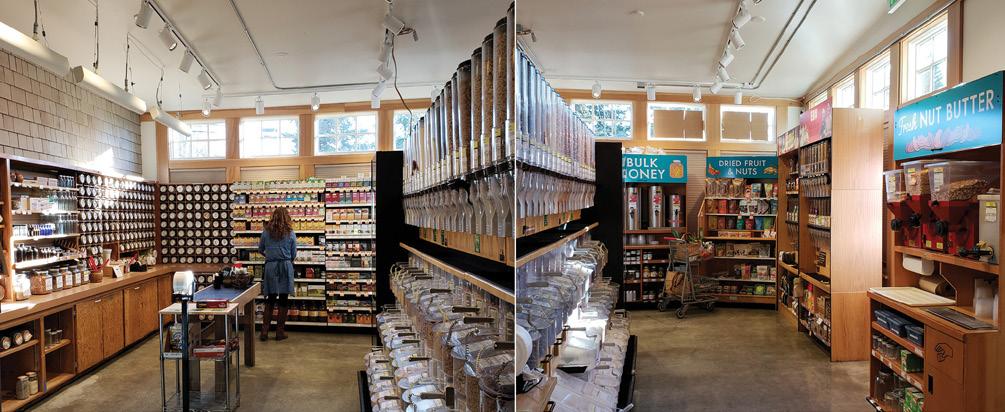

Did you know that our to-go deli containers are reusable? You can return them to the deli (rinsed, please) and we will sanitize and reuse them. The deli also reduces waste by sending our food scraps and coffee grounds to local farms to add to their compost piles
Bring your own reusable tote bags. Our Bean for Bags program means you get eight cents for each bag, or you can get beans to put in the Beans for Bags jars at the front of the store, and the eight cents will go to a local non-profit.
We have an exciting new partnership with PT Potential, a group that takes plastic lids and six-pack holders (which are not usually recyclable) and makes them into useful things like tile. You can bring your own plastic lids to them at the Co-op every third Saturday. As a nice bit of synergy, the Marketing Department has repurposed old Co-op banners into totes to sell, and all the receipts will go to PT Potential.
Our jar saver program also saves on packaging. Drop your clean, label-free, wide-mouth glass jars with lids at the recycling area near the bulletin board. (Be sure to remove the labels, because they clog the sanitizer.) We sanitize the jars to meet the Jefferson County Health Department codes, and then place them in our bulk area for customer use.
We also recycle a variety of materials, including paper bags, cardboard, plastic bottles, aluminum cans, and glass. We even collect clean and dry #2 and #4 plastic bags (bread bags, food storage bags, ice bags, cereal liners, produce bags). There are dedicated bins located at the front of the store, making it easy for customers and staff to recycle.
In addition to recycling, we reuse. We save boxes so members can use them to “bag” their groceries or to take home to use. Members can also bring their bubble wrap for others to use (see the bins
outside the store). Plus, most of our produce boxes are reused. Goosefoot Farm reuses the boxes for deliveries to the Tri-Area Food Bank; Red Dog and Dharma Ridge Farms reuse them for food deliveries; and Midori Farm reuses our mango boxes for veggies starts. Staff constantly look for ways to reuse and recycle—they save used paper for notes, audit our waste to see where we can do better, constantly look for better packaging (for instance, try using the biodegradable green bags in produce, or better yet, bring your own produce bag!)
COMMUNITY SHARING REPORT
BY ANDREA STAFFORD, MARKETING MANAGERNourishing a community means more than just providing healthy food. At The Co-op, we believe it’s about sharing prosperity and resources to support the community as a whole. We share our profits and invest in non-profit organizations and community groups working to make Jefferson County an amazing place to live.
To make the biggest impact, we focus our efforts on four pillars of giving: food access, sustainable land and sea stewardship, healthy communities, and supporting the cooperative model. One of our most successful community sharing programs is Beans for Bags, which rewards customers for their sustainability efforts by giving eight cents back for each reusable bag used. Customers can either keep the bag credit or donate it to one of three local nonprofits. In 2022, we donated $18,701.88 to local organizations, our biggest year yet!
Food Access
We are committed to providing food access to all. Our newest achievement is implementing the SNAP Produce Match program in our store, which matches $10 in organic produce per visit. Additionally, we donated over 7000 food items to the Jefferson County Food Bank and provide ongoing support with annual cash donations, a food donation bin in our lobby, weekly food donations, and a Beans for Bags donation jar every month. We continued to subsidize food access at the Farmers Markets with sponsorship funds allocated to their food access programs, including the “SNAP Market Match” program and the Veg RX program in partnership with Jefferson Healthcare. Using the interest generated by our participation in the Twin Pines Cooperative Community Fund, The Co-op’s Grow Fund awarded $1546 to the Jefferson County Anti-Racist Fund to supply local BIPOC families with locally grown, weekly CSA shares.
Sustainable Food System Development
We supported sustainable food system development by partnering with the Eat Local First Collaborative to launch the third annual Eat Local First Month and promote the online Food and Farm finder tool for consumers. We also sponsor events and provide financial support for the Jefferson Land Trust to protect farmland in Jefferson County.
Starting in the summer of 2022, the Board’s Community Engagement Committee decided to allocate our Change for Change funds to farmers in Jefferson County who donate to the local food banks or schools to help them with rising costs. Since then we have donated funds to One Straw Ranch, Solstice Farms, Red Dog Farm, Midori Farm, Mystery Bay Farm, SpringRain Farm and Orchard, Stellar Jay Farm, Dharma Ridge Farm, Kodama Farm and Food Forest, and the Food Bank Gardens.
Healthy Communities
The Co-op works to nourish healthy communities through strategic partnerships, community sharing, and participating vendor programs.
Strategic Partnerships: For the fourth year, in partnership with Jefferson Healthcare and the Jefferson County Farmers Markets, we offered families who qualify for Apple Health and have children 18 years old and younger a three-month voucher for $50 of fresh fruit and vegetables. These “VegRx” vouchers are given out while supplies last by Jefferson Healthcare clinicians when children up to 18 years old come in for a medical appointment or a Well-Child-Check. VegRx coupons are redeemable at the Port Townsend and Chimacum Farmers Markets June through December and at the Co-op January through March.
Community Sharing: Last year the Co-op supported dozens of local nonprofits and organizations through in-kind donations and event sponsorships. We greatly value the organizations doing work in our local community as well as our larger regional community, so we share as much as we can. A few small things we do regularly that may go unnoticed: The Co-op supplies Head Start with organic milk for children ages 3-5 attending their programs; donates organic broths to the Just Soup program, which provides hot soup every day to those who are looking for a warm meal; and daily gives food to our local Jefferson County Food Bank.
Vendor Support Programs: In partnership with Organically Grown Company (our regional produce supplier), we sold bagged Farm-2-School apples, benefiting the Community Wellness Project programs at Chimacum, Quilcene, and Salish Coast Elementary Schools. The funds help support buying local produce as well as developing and managing the school gardens.
Supporting the Cooperative Model
We love cooperatives and look for opportunities to help other cooperatives grow and thrive. We do this by financially supporting organizations that work on this goal, including the Twin Pines Cooperative Foundation, the Food Co-op Initiative, and the Olympic Cooperative Network, because together we really can do more.
At the Co-op, we are committed to nourishing our community. From supporting sustainable land stewardship to providing healthy food access, we are proud to be a part of Jefferson County’s amazing community. To learn more about The Food Co-op’s community sharing programs, please visit http://www.foodcoop.coop/communitysharing
CONNECTING WITH YOUR COMMUNITY BY THE NUMBERS
$615.07 Donated to the Community Wellness Project from Farm-toSchool 3lb. Apple Bag Purchases
GROW Fund award to the Jefferson County AntiRacist Fund to provide weekly local produce boxes— $1456
$8,732.38 in donations to local nonprofit and community organizations!
Deposits into our Twin Pines Cooperative Community Endowment Fund— $2,320 Local program and event sponsorships
$14,675
233,773 beans were collected—That’s also 233,773 single-use bags saved from the landfill and $18,701.88 donated to local organizations. Our biggest year yet!
7,000+ food items donated to the Food Bank
LOCAL QUANTITIES SOLD IN 2022
Anca cookies–you don’t want to know how many! Plus over 6000 packages tiramisu.
Over 1400 4-ounce packages Mystery Bay chevre.
Over 13,000 loaves Pane d’Amore Breads
Over 750 packages Gathering Place dog biscuits.
Over 70 pounds Mountain Spirit bulk tea blends
Over 2800 pounds SpringRain Farm chicken.
Over 1400 mixed flower bouquets from Dietrich Farms and Annie’s Flower Farm.
Over 2500 Crust hand pies.

Over 2000 dozen local eggs from One Straw Ranch, Solstice Farm, Chimacum Eggs, and Chicken & Egg.
Over 3000 slices Wild Crow Pie spanakopita.
4400 cans Cape Cleare canned tuna & salmon.
Over 2000 16-ounce jars Midori kraut, all flavors.
Over 1700 pounds Sunrise Coffee De-Caf & Port Townsend blend bulk coffees.
1400 dough balls Bob’s Bagels
Over 1000 pounds Chimacum Valley Grainery bulk hard red wheat flour.
2022 FINANCIALS
By Owen Rowe, Board TreasurerThe COVID pandemic and other environmental, social, and economic shifts have affected every aspect of The Food Co-op over the past few years, and our finances are no exception. In financial terms, our 50th Anniversary year of 2022 still doesn’t count as the “new normal”—but we might be getting close!
The results are shown on the Profit & Loss Summary for 2022. Overall the numbers look good, although it’s worth acknowledging that they hide some challenging realities. The store had strong revenue growth— but some of that growth was due to inflation and higher prices for products. And we did a good job of containing our expenses—but some of those savings were because we were understaffed for much of 2022. Our hard-working staff received a significant Gainshare payment, based on their hours worked, in Fall 2022.
Despite the challenges, we ended the year with a small profit. The Food Co-op is owned by its members, so we’re sharing that profit with our member-owners. The board has declared a Patronage Dividend for 2022, proportional to members’ purchases at the store, to be available July 5th, 2023. Look for details in an email or letter towards the end of June, with a formal announcement at our Annual General Meeting on June 27th. The “Other Income” item includes the Employee Retention Credit (ERC). This was an incentive offered by the US government for companies to retain and add staff during the pandemic. The Co-op met the requirements for 2020 and 2021, then filed the paperwork and got approved in 2022. Since it’s not
operational income from 2022 sales, it doesn’t count towards the Patronage Dividend. Instead, we’re setting it aside for strategic expenses and investments.
Our Balance Sheet was already strong, and it’s even stronger with the addition of those ERC funds. That’s good, because 2023 and beyond hold some financial challenges, including disruptions due to construction, like the new roundabout the state is installing at Kearney St. and Sims Way (SR 20), work to continue improving our store, and ongoing shifts in the grocery business, such as the potential Kroger-Albertson’s merger. Already in 2023, we have used some of the ERC funds to pay off the original mortgage on our store building and the loan for the equipment we added during the expansion in 2018.
Thanks to our memberowners and community who continue to shop and support our store, The Food Co-op is financially prepared to meet the challenges of the future.
YOUR CO-OP BY THE NUMBERS $ $
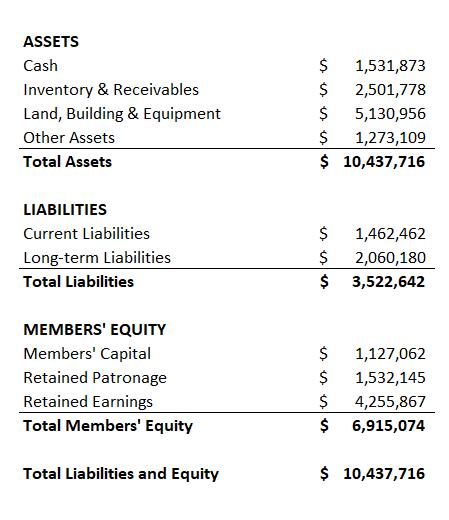


Fresh Summer Salads
Grilled Panzanella
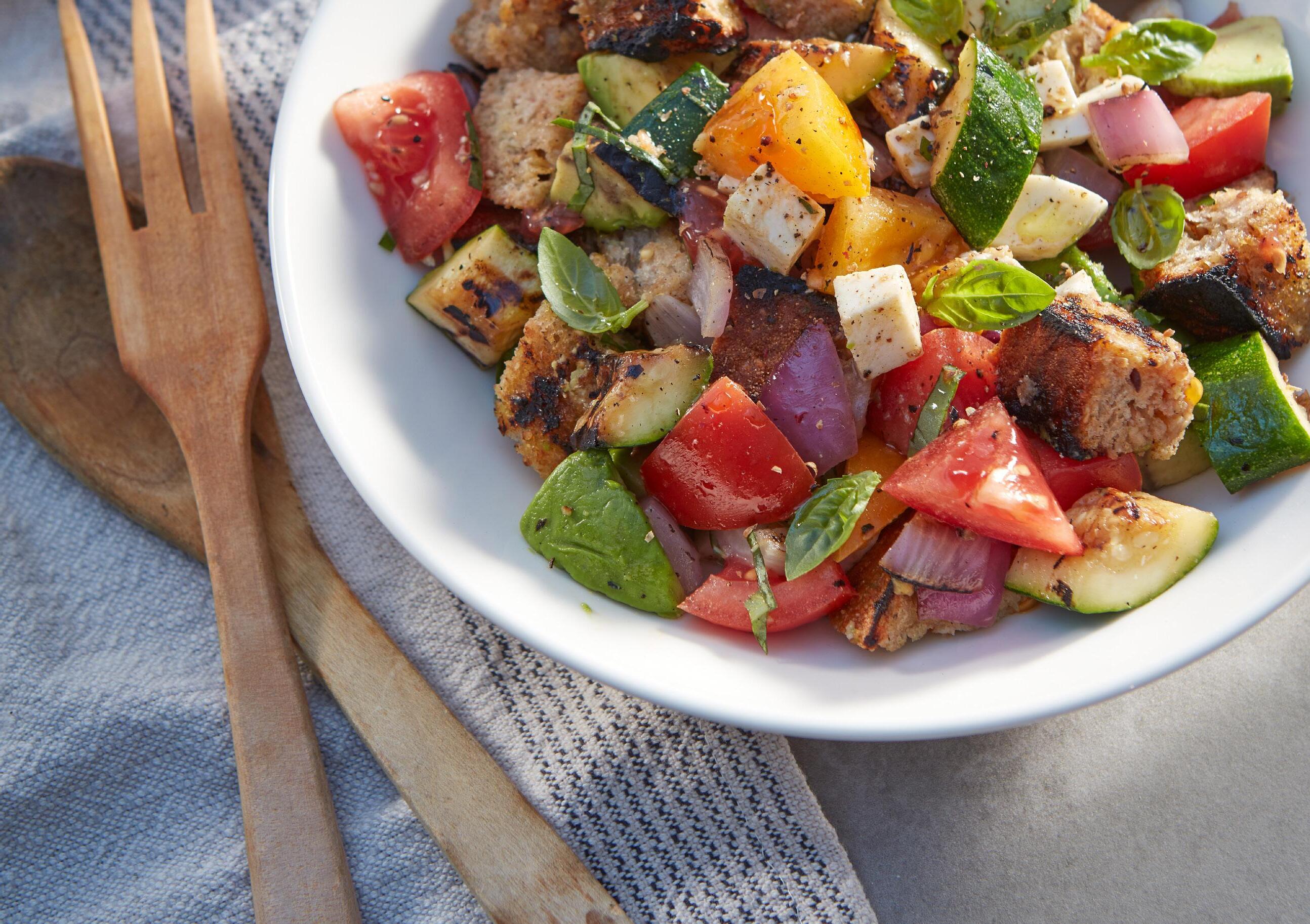
Serves 4 to 6. Prep time: 30 minutes.
2 slices of rustic bread, cut ¾-inch thick
1 medium zucchini, quartered lengthwise
1 large, firm avocado, pitted and quartered
1⁄2 medium red onion, cut into ¾-inch rounds
3 tablespoons extra virgin olive oil, plus more for brushing
3 tablespoons balsamic vinegar
1 teaspoon salt
1⁄2 teaspoon freshly ground black pepper
1 clove garlic, crushed
4 large tomatoes, chunked
4 ounces fresh mozzarella, diced
1 cup fresh basil, shredded
1. Preheat the grill to medium high. Put two tablespoons of olive oil in a small bowl or cup and dip a wadded paper towel into the oil. When
ready to grill, use tongs to swab the grate with the oiled towel.
2. Use your pastry brush to brush the bread, zucchini, avocado and onion with oil, then place each piece on the hot grill. Grill the bread for about one minute per side, until browned and toasted. Grill the zucchini, onion and avocado until tender, about four to five minutes. Transfer the food back to the cutting board and let cool, then cut into bite-sized pieces.
3. Transfer the grilled ingredients to a large bowl. In another bowl, whisk the remaining oil, balsamic vinegar, salt, pepper and garlic, and pour over the ingredients in the large bowl.
4. Add the tomatoes, mozzarella and basil to the bowl, and toss to mix. Serve immediately.
Black-eyed Pea Salad

Serves 6. Prep time: 20 minutes.
2 15-ounce cans black-eyed peas, drained and rinsed
1 large carrot, shredded
1 medium cucumber, peeled, seeded and chopped
2 large scallions, chopped
1 large jalapeño, minced
1 cup cherry tomatoes, halved
1⁄2 cup fresh parsley, chopped
Dressing
3 tablespoons sesame seeds
2 tablespoons red wine vinegar
2 tablespoons honey
1⁄4 cup extra virgin olive oil
1⁄2 teaspoon salt
1. Combine the black-eyed peas, carrot, cucumber, scallions, jalapeño, tomatoes and parsley in a large bowl.

2. In a small saute pan, place the sesame seeds and swirl over high heat. When the seeds are lightly toasted, transfer to a small bowl. Add the vinegar, honey, olive oil and salt and whisk to combine.
3. Drizzle the dressing over the pea mixture and toss to mix. Serve or refrigerate, tightly covered, for up to three days.
Thai Cucumber Salad with Peanuts

Serves 6. Prep time: 1 hour 15 minutes; 15 minutes active.
2 pounds (about 3 large) cucumbers, split lengthwise, seeded, and sliced into 1/4-inch crescents
3 scallions, sliced
1⁄4 cup cilantro, finely chopped
2 tablespoons fresh parsley, finely chopped
1 small jalapeño pepper, seeded and finely chopped
1⁄2 cup roasted peanuts, coarsely chopped
1 tablespoon sesame seeds
Dressing
1⁄3 cup rice wine vinegar
1⁄4 cup canola oil
2 teaspoons sugar
1 teaspoon garlic, minced
1 teaspoon curry powder
1. In a small bowl, whisk together all dressing ingredients. Set aside.
2. In a large glass or stainless steel bowl, combine all vegetables. Add dressing and toss. Let sit at least 1 hour, mixing occasionally.
3. Add peanuts just before serving and stir to combine. Garnish salad with sesame seeds.
Italian Marinated Chopped Salad
Serves 6. Prep time: 50 minutes; 20 minutes active.
2 tablespoons red or white wine vinegar
2 cloves garlic, pressed
1 teaspoon dried oregano
1 teaspoon Dijon mustard
1⁄4 teaspoon salt
1⁄4 cup extra virgin olive oil
1 12-ounce jar marinated artichokes, drained
1 15-ounce can chickpeas, drained
1 15-ounce can kidney beans, drained
1 cup pitted Kalamata olives
2 large oranges, peeled, segmented and cut in pieces
4 ounces sliced mini-pepperoni
4 ounces fresh mozzarella, chopped
2 romaine hearts, chopped
4 leaves radicchio, torn
1. In a large bowl, whisk together the vinegar, garlic, oregano, mustard and salt. Then whisk in the olive oil.
2. Add the artichokes, chickpeas, kidney beans, olives, oranges, pepperoni and mozzarella to the bowl and toss to coat. Marinate for at least 30 minutes. This can be tightly covered and refrigerated for up to 4 days.
3. To serve, spread the romaine and radicchio on a large platter and sprinkle the marinated vegetable mixture over the top, drizzling any left over dressing over the salad. If desired, toss
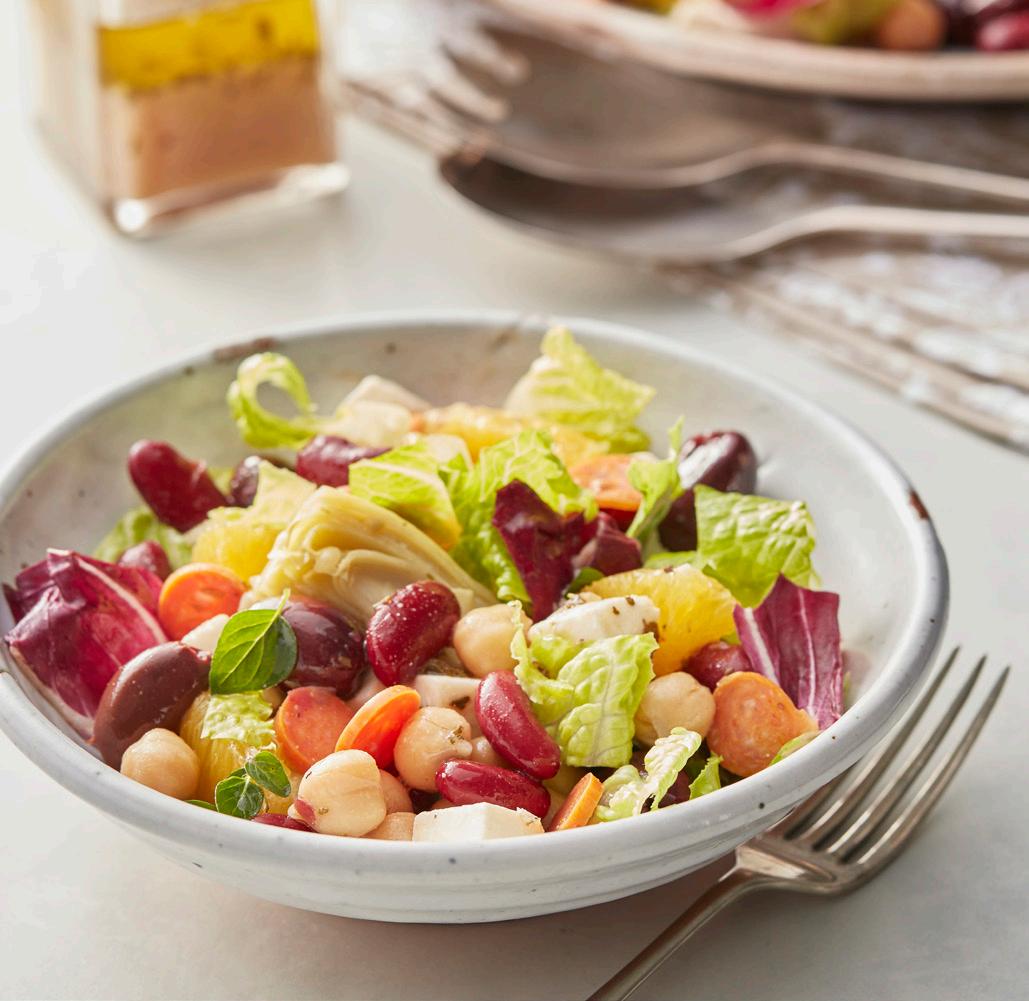
Kale Cranberry Salad
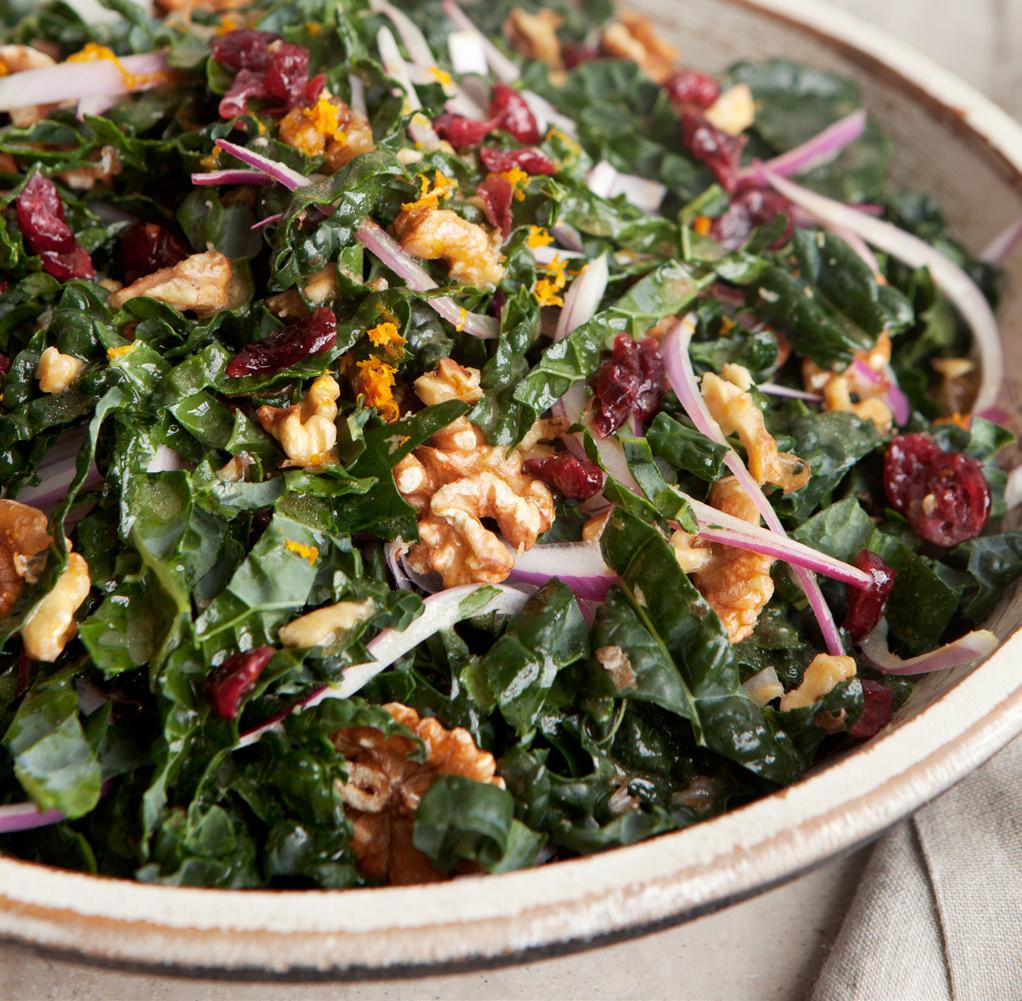
Serves 4. Prep time: 15 minutes.
2 large bunches lacinato kale, thinly sliced
1⁄2 cup red onion, thinly sliced
1⁄2 cup dried cranberries
1⁄2 cup walnuts (toasted, optional)
Dressing
1⁄3 cup extra virgin olive oil
2 tablespoons cider vinegar
2 tablespoons orange juice
1 1⁄2 teaspoons Dijon mustard
1 1⁄2 teaspoons honey
1 teaspoon orange zest
1⁄4 teaspoon salt
1. Place the kale, onions, cranberries and walnuts in a large bowl and set aside.
2. Whisk together all of the dressing ingredients in a small bowl. Drizzle the dressing over the mixed kale and toss well.
Let these recipes inspire your own salad improvisations! Reach for flavorful and nutritious toppings — try fresh herbs, beans and lentils, cooked whole grains like quinoa and farro, fruit slices, nuts and seeds.
Lebanese Cabbage Salad

Serves 6. Prep time: 15 minutes.
1⁄2 small red cabbage (8 cups shredded)
1 large carrot
1 small red onion, slivered
1 large jalape ño or other chili pepper, chopped
1⁄2 cup parsley, chopped
1⁄2 cup fresh mint, chopped
1 clove garlic, pressed
2 tablespoons extra virgin olive oil
2 tablespoons fresh lemon juice
1⁄2 teaspoon salt
Orange segments
Toasted slivered almonds
1. Use the slicing blade of a food processor to shred the cabbage, then switch to the coarse blade to shred the carrot. (You can do it by hand, as well.)
2. Place the cabbage and carrot in a large bowl and add onions, jalapeño, parsley and mint.
3. In a cup, combine the garlic, olive oil, lemon juice and salt. Pour over the cabbage mixture and toss to mix.
4. Transfer to a serving platter, then top with orange segments and almonds.



